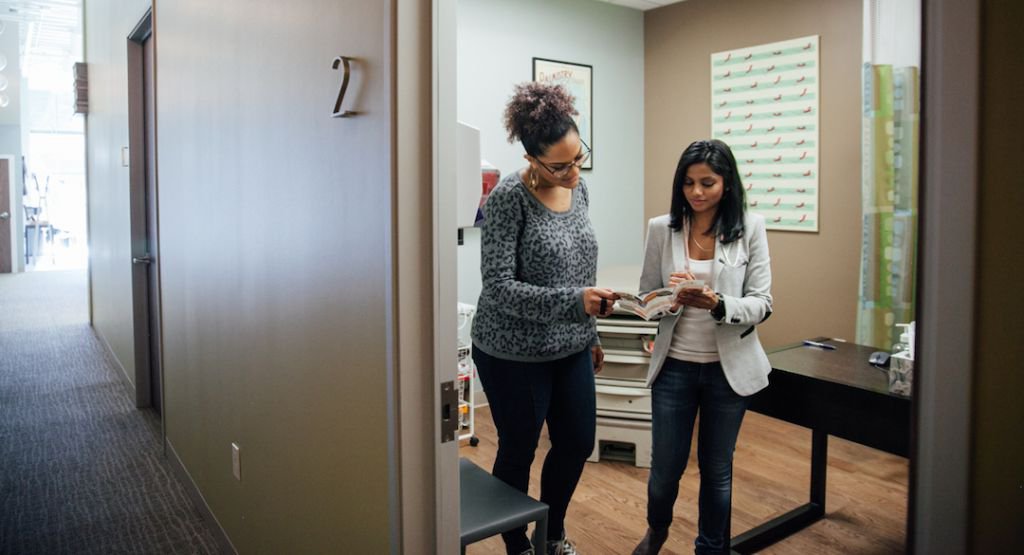
Originally published January 26, 2017
When it comes to contraception, there’s no one-size-fits-all approach. With the help of your primary care provider, you’ll want to consider the pros and cons of each birth control option and decide which method makes the most sense for your individual lifestyle.
If you’ve narrowed down your choices and believe an intrauterine device (IUD) is right for you, congratulations! — it’s one of the safest, most effective forms of contraception available. But the decision-making process doesn’t stop there; there are a few different kinds of IUDs on the market, and understanding how each one is unique will help you find the one that works for you.
There are two major categories of IUDs: hormonal and nonhormonal:
Hormonal (progestin) IUDs
Brand names: Liletta, Mirena, Kyleena and Skyla.
Effectiveness: Over 99% effective.
Duration: Liletta for 8 years, Mirena lasts for 8 years, Kyleena for 5 years, and Skyla for 3 years.
Availability: Liletta, Mirena, Kyleena, and Skyla are available at all of our offices.
How they work: Hormonal IUDs release a small dose of a hormone called levonorgestrel into the uterus. This is a form of progestin that’s found (in much larger amounts) in birth control pills. It’s purpose is to thicken cervical mucus, creating a barrier that sperm can’t pass. It also thins the lining of the uterus, and in some people, stops ovulation. Liletta releases 18.6 mcg of progestin a day, Mirena releases 20 mcg of progestin a day, Kyleena releases 9 mcg a day, and Skyla releases 6 mcg a day.
Pros:
- Hormonal IUDs are a long-lasting, continuous method of contraception.
- They’re low maintenance; there’s no daily pill to remember or patch to replace.
- They might make your periods lighter or stop altogether, and they may reduce cramps.
Many people using Liletta and Mirena stop having their periods: after one year of use, 20% no longer menstruated, and after 2 years, 60% stopped having periods. This is perfectly normal and healthy. The reason it’s usually unique to Liletta & Mirena is that Kyleena and Skyla have lower doses of hormones, which are more likely to keep your period coming, although it will likely get lighter, and may not occur every month.
Cons:
- You might experience spotting between periods or irregular bleeding. This usually happens in the first 3-6 months as your body adjusts to the IUD. Most people find their bleeding normalizes to a “new normal” of lighter or no periods by about 6 months.
- It takes 7 days after placement for the IUD to start working, so you’ll need to use a backup form of birth control for the week after insertion.
Nonhormonal copper IUD
Brand name: ParaGard
Effectiveness: Over 99% effective.
Duration: FDA approved for 10 years, but evidence tells it’s effective for up to 12 years.
Availability: We stock ParaGard in all offices where we place IUDs.
How it works: The ParaGard doesn’t contain any hormones. Instead, it releases copper ions which create a hostile environment for sperm, which prevents fertilization. The device itself also acts as a mechanical barrier to prevent fertilization.
Pros:
- It’s the longest-lasting reversible birth control method available.
- It doesn’t contain hormones, so you can avoid any potential side effects those may have.
- It’s low maintenance.
- It starts working right away.
Cons:
- It may make your periods heavier and last longer (up to 7-10 days), and your cramps might get worse.
- You may have spotting between periods or irregular bleeding, but this is rare, and more common in the first 3-6 months as your body gets used to the device. By about 6 months, you’ll likely reach your “new normal” of longer, heavier periods.
Have more questions about IUDs? Our primary care team is here to help. At One Medical, we aim to provide exceptional care designed around you and your unique health goals. Sign up today to book a same or next day appointment — in person or over video — through our app.
Other resources:
The One Medical blog is published by One Medical, a national, modern primary care practice pairing 24/7 virtual care services with inviting and convenient in-person care at over 100 locations across the U.S. One Medical is on a mission to transform health care for all through a human-centered, technology-powered approach to caring for people at every stage of life.
Any general advice posted on our blog, website, or app is for informational purposes only and is not intended to replace or substitute for any medical or other advice. 1Life Healthcare, Inc. and the One Medical entities make no representations or warranties and expressly disclaim any and all liability concerning any treatment, action by, or effect on any person following the general information offered or provided within or through the blog, website, or app. If you have specific concerns or a situation arises in which you require medical advice, you should consult with an appropriately trained and qualified medical services provider.
